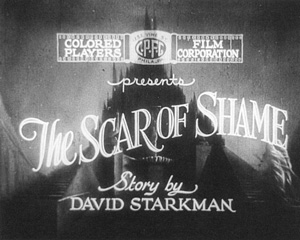EHRC consultation on religion and discrimination
Instead, it has said that people like civil registrar Lillian Ladele and relationship counsellor Gary McFarlane should not be able to use their faith to justify refusing to serve LGBT people, but that there are situations where 'reasonable accommodation' should be made for employees' religious convictions, such as Nadia Eweida wanting to wear a small cross on a chain while working on an airline check-in desk.
The EHRC is now asking for people's opinions on four cases filed with the European Court of Human Rights and in which it has been given permission to intervene. The cases include the three mentioned above plus that of Shirley Chaplin, a nurse who wanted to wear a crucifix on a chain while working on a hospital geriatric ward.
You can take part in the consultation by reading the consultation document and emailing or writing to the EHRC, or you can make use of this handy form at the Gaily Mail, which makes it all easy peasy (but do still read the consultation document first so you know what you're responding to).
The details of Nadia Eweida and Shirley Chaplin's cases (which have been filed together) can be downloaded here (Word doc), and those of Lillian Ladele and Gary McFarlane's (also filed together) are here (Word doc). A bit involved but interesting.
The deadline for responses is 5 September, so don't tarry...
I don't know whether this really was a backtrack on the part of the EHRC, or whether it just hadn't communicated its position clearly enough in the first place. Whichever it is, I know I found the clarification much more reassuring than the initial press release.
I emailed my response to the EHRC today:
Response to EHRC’s Legal intervention on religion or belief rights: seeking your views
1. Please let us know if you think the UK tribunals and courts applied the correct principles to the cases of Eweida or Chaplin to ensure that freedom of religion and belief was properly respected as set out in articles 9 and 14 of the European Convention? Please let us have your views on the cases and whether there are specific aspects you think are important.
Yes and no. It is reasonable for someone to be able to manifest their beliefs, though this should not interfere with their ability to do their job safely and effectively. There might also be situations where their job puts them in a position of power or authority over others and where displaying or professing personally held beliefs could be inappropriate.
In Nadia Eweida’s case, it is unfair that accommodation had been made for Sikh and Muslim employees to wear symbols of their faith but that a similar agreement had not been made with her. It is easier for employers to respond to the articulated concerns of groups of employees about acknowledged symbols than to pre-empt an individual’s desire to wear one that many others of the same religion do not view as a necessary manifestation of faith.
However, given that British Airways already recognised that its employees could display religious symbols without this affecting customer-facing roles, and given that there was no reason to believe that Eweida’s cross on a chain would provide any additional barriers to her doing her job safely and effectively, it is disappointing that approval was not given when she first objected to removing it on grounds of faith. Whether or not she should be entitled to compensation for lost earnings, she is unlikely to have been in a situation where this would be an issue if a principle of reasonable accommodation were in place and if her employer had applied it.
This presents its own questions – What might some people claim as a symbol of their beliefs? What motivations might they have for doing so, and could these be judged fairly by others? There may also be a concern that professing a belief could be used to gain privileges that non-religious people won’t be able to enjoy, but this seems disproportionate in a case of wanting to wear a cross on a chain. The principle of reasonable accommodation appears sound so long as a person’s ability to do a job, which they have chosen to take on, in a safe and effective manner is taken into account.
Shirley Chaplin’s case is rather different. Her employer seems to have applied a practical consideration in an equitable way and in line with appropriate guidance from the Department of Health[1]. Accommodation had been made with others where possible, and a possible solution was offered to her but rejected on the grounds that her crucifix would not be seen by others.
I hope that Chaplin is underestimating herself when she says that her actions may suffer if people could not see that she was a Christian and so hold her accountable to her convictions. As a registered nurse, she would be bound by the Nursing and Midwifery Council (NMC) code[2] to maintain professional standards of conduct, performance and ethics, and this should be sufficient for any NMC registrant in combination with their personal moral sense, whatever its source.
Another issue that needs to be considered is whether a professional is abusing a position of power to impose their personal beliefs upon someone who should be able to expect non-judgemental, person-centred support or care. Yet, while this would apply in professing faith in certain circumstances, making an unsolicited offer to pray or discriminating in how service users are treated, it is unlikely that wearing a crucifix would constitute an imposition for someone else (unless there was good reason to believe that vulnerable service users might feel intimidated by the imagery).
2. Please let us know if you think the UK tribunals and courts applied the justification test correctly in the cases of Ladele or McFarlane? Please let us have your views on the cases and whether there are specific aspects you think are important.
Yes, I think this was applied correctly. Lillian Ladele and Gary McFarlane wanted to discriminate against service users in same-sex relationships on the basis of their disapproval of them, and this would be wrong even though this disapproval is founded upon their religious convictions.
It is right that people should be protected against discrimination on the grounds of their religious or similar beliefs, but it is wrong to use these beliefs as a justification for discriminating against others. If either Ladele or McFarlane were being discriminated against on the grounds that they were Christian – even if that included their disapproval of same-sex relationships – then that would be wrong. You should not be able to legislate against people’s beliefs, even if you object to them, unless you have very good grounds for thinking that these beliefs will lead to unacceptable practices.
However, their employers took issue with their refusal to commit to not discriminating against certain clients in providing services that were part and parcel of their jobs. To filter out lesbian, gay and bisexual (LGB) clients so that they didn’t have to work with them would be wrong, as would exposing LGB clients who were inadvertently not filtered out to their disapproval.
A narrative has developed in discussions of these and similar cases about ‘balancing out’ different groups of people’s rights with each other[3]. This is flawed because it incorrectly presumes that equivalent rights are being compared. If an atheist lesbian registrar refused to register Christian couples of whose beliefs and lifestyles she disapproved, it would be wrong to filter out Christian clients for her (if they abused or harassed her because she was lesbian or atheist then that would be different). Similar situations could include a humanist gay B&B owner refusing to let a room to a Muslim customer, or indeed a heterosexual Jewish B&B owner refusing to accept a Christian customer (again, as opposed to if either customer behaved in a homophobic or anti-Semitic way).
Through this narrative, some suggest that religious convictions should be able to ‘trump’ other people’s rights – those they disapprove of and want to be able to discriminate against, and non-religious people who would find it hard to justify similar discrimination on non-religious grounds[4].
It is right that Ladele and McFarlane were ruled against, not because their rights as Christians are less important than those of LGB people, but because any right that someone might believe they have to discriminate against others on the basis of sexual orientation or religion/belief (even if based on religious or other strongly held beliefs) is outweighed by everyone’s right to not be discriminated against on grounds of either sexuality or religion/belief in the provision of goods and services.
Another narrative used by groups such as the Christian Legal Centre, which campaigns for Ladele and McFarlane’s justification of discrimination to be legal, draws a line between discriminating against LGB people and other forms such as racism[5]. It says that discriminating against LGB people because of a religious conviction that sex between two people of the same sex is sinful is different to discriminating against someone because of what they are (eg a person of a particular race).
It is extremely contentious to say that people are LGB only in as much as we have same-sex sex and relationships, as it is to say that being mixed race, Black, White or Asian in the UK in 2011 has nothing to do with time and place-specific social and cultural constructs, and only reflects predetermined and essential characteristics. It would also be possible to argue (just as contentiously) that people’s religious beliefs are not essential, but dependent on their context, experiences and choices, and this could just as easily be used to defend discriminating against someone because of their religion.
If it were acceptable to discriminate against people on the basis of convictions about their assumed sexual behaviour being wrong, would it then be reasonable for a B&B owner to refuse an interracial couple accommodation on the grounds that they disapproved of interracial sex? I suspect that this would rightly be viewed as unacceptable racism, even if the B&B owner’s disapproval was founded upon their religious beliefs.
3. Do you think some concept akin to reasonable accommodation for individuals wishing to manifest their religions or beliefs in the workplace should be incorporated into the approach to human rights in the UK?
Yes, as long as this really is reasonable accommodation – there are many situations in which accommodation would not be reasonable – and clearly about manifesting religious beliefs rather than justifying discrimination against or unreasonable behaviour towards others on the grounds of these beliefs.
Nadia Eweida’s case shows how reasonable accommodation could be used constructively to avoid unnecessary conflict and legal proceedings.
Shirley Chaplin’s case serves as one example of where lines need to be drawn to determine when accommodation would in fact not be reasonable.
Lillian Ladele and Gary McFarlane’s cases demonstrate situations in which accommodation should not even begin to be considered.
[1] Department of Health. (2009) Religion or belief: a practical guide for the NHS. London: Department of Health.
[2] Nursing and Midwifery Council. (2008) The code: Standards of conduct, performance and ethics for nurses and midwives. London: Nursing and Midwifery Council.
[3] Evangelical Alliance. (2011) Calls for changes in human rights law to protect individuals. London: Evangelical Alliance.
[4] National Secular Society. (2011) Court rules against homophobic discrimination. London: National Secular Society.
[5] Geen J. (2011) Christian campaigners claim ‘massive support’ for compromises for anti-gay workers. London: PinkNews.co.uk







